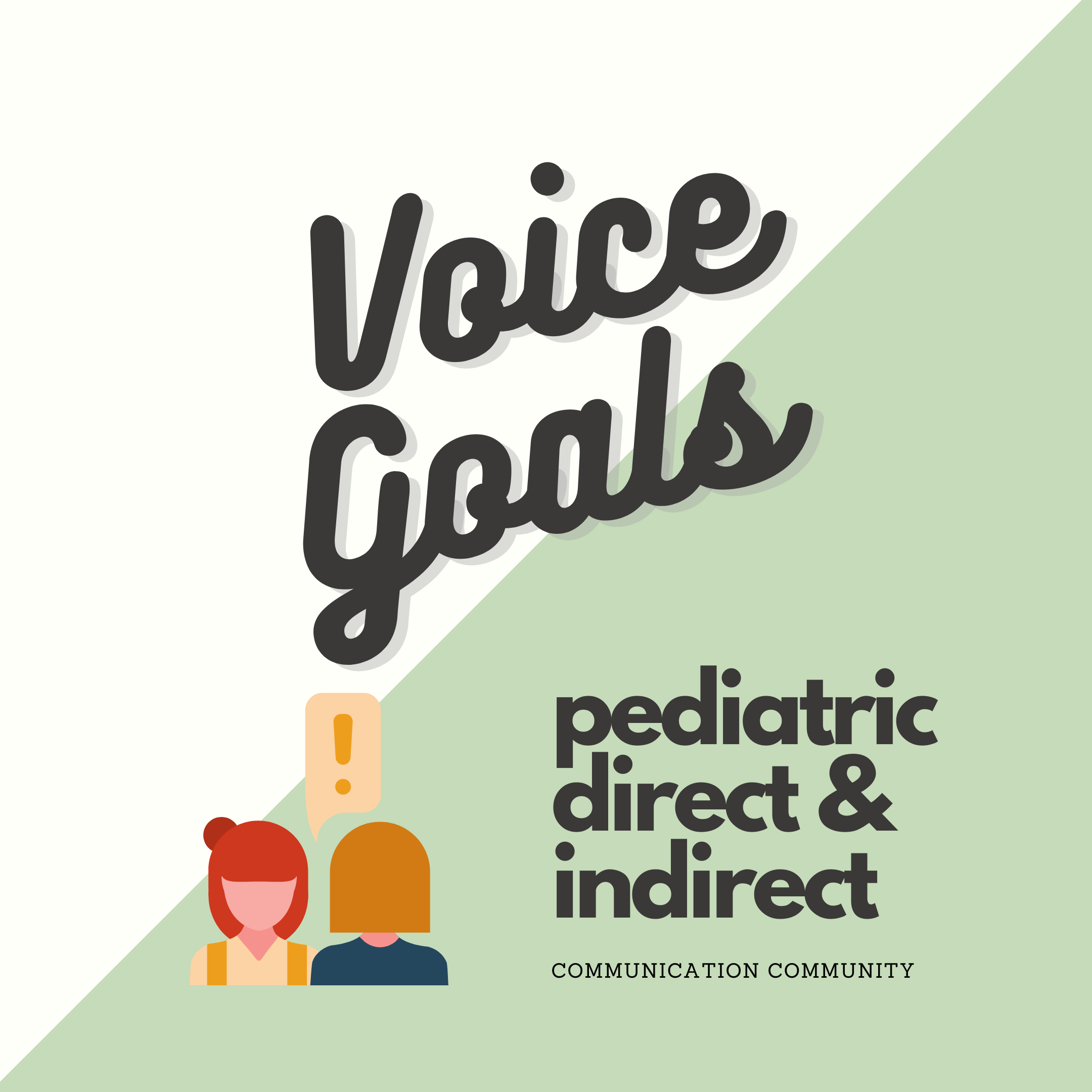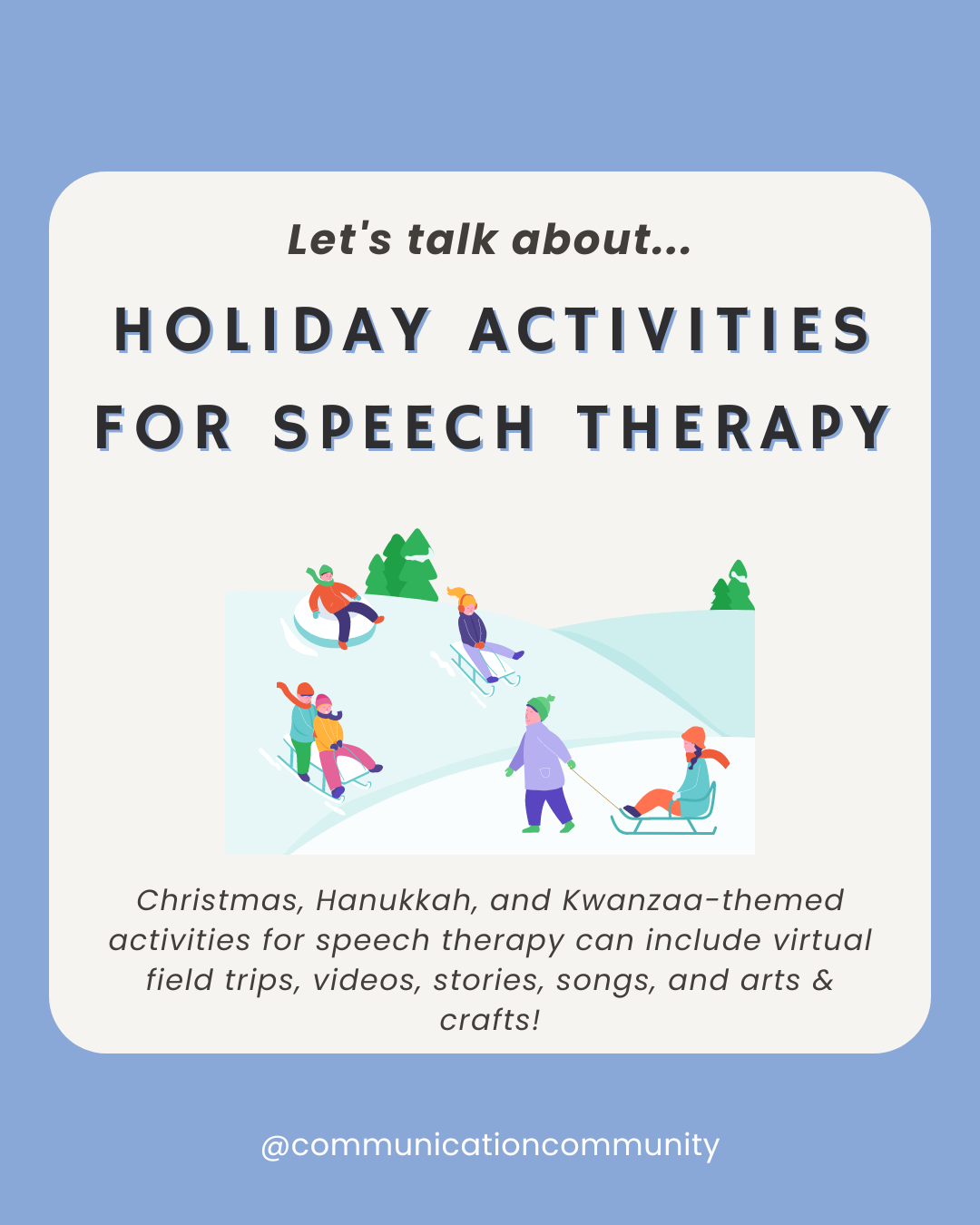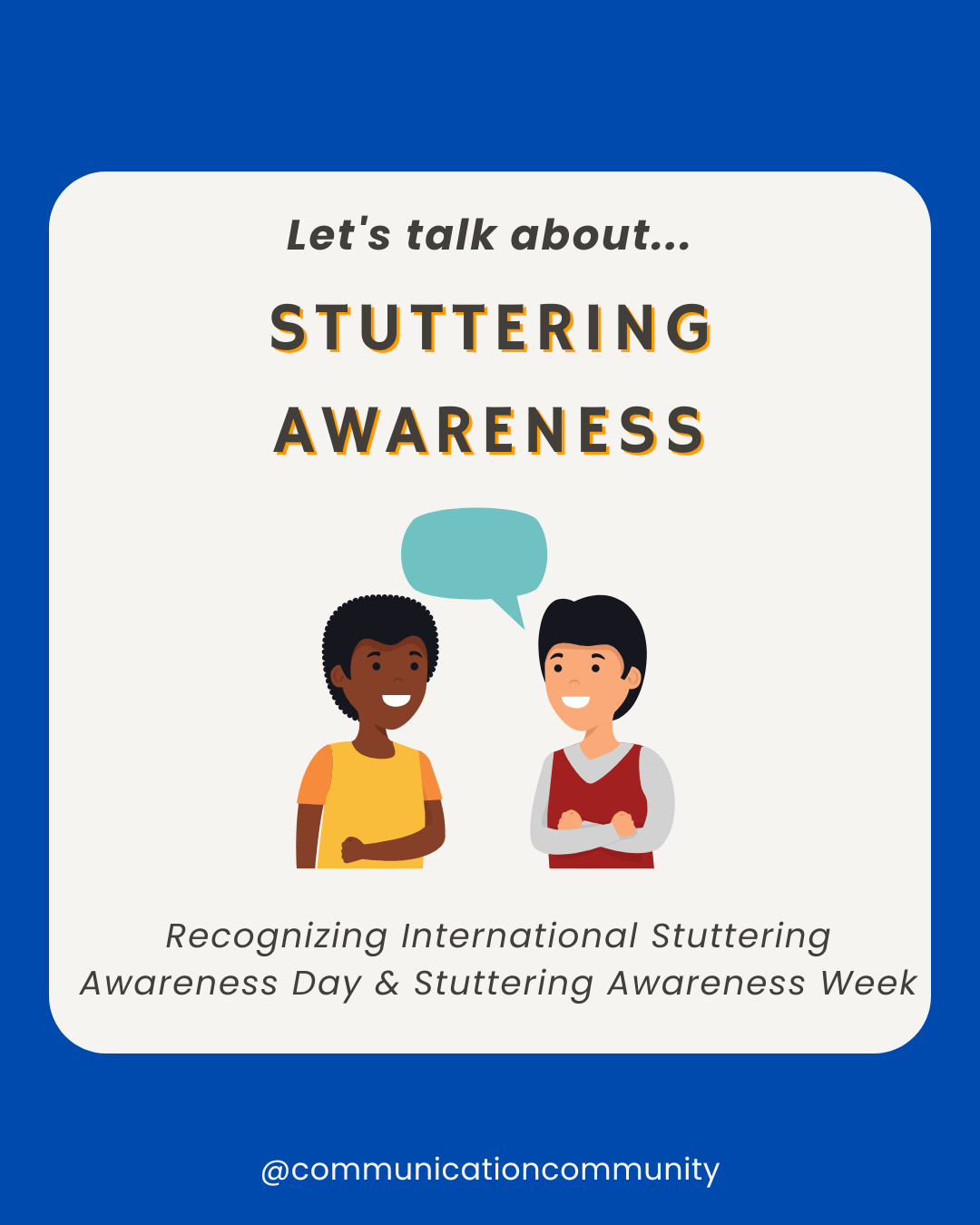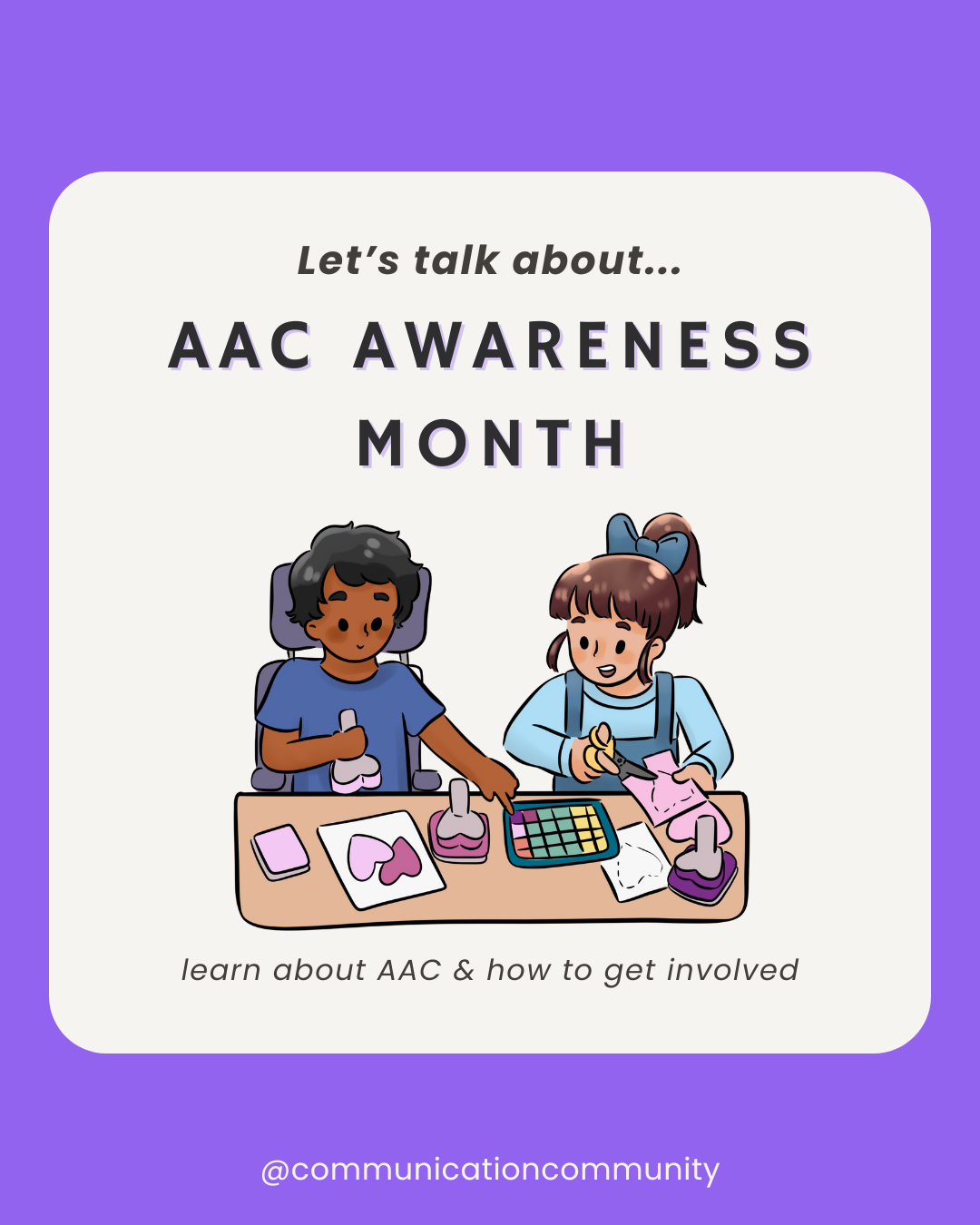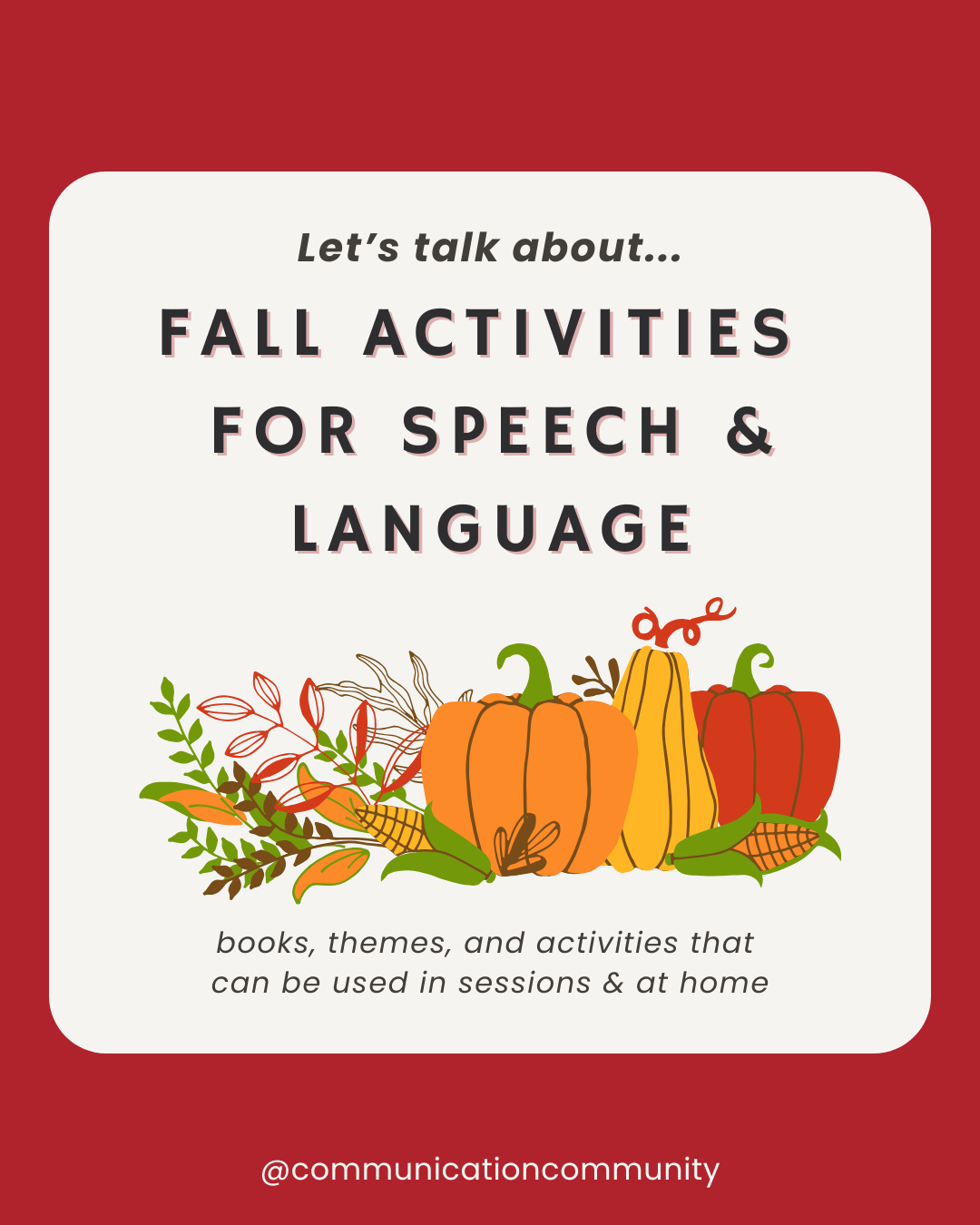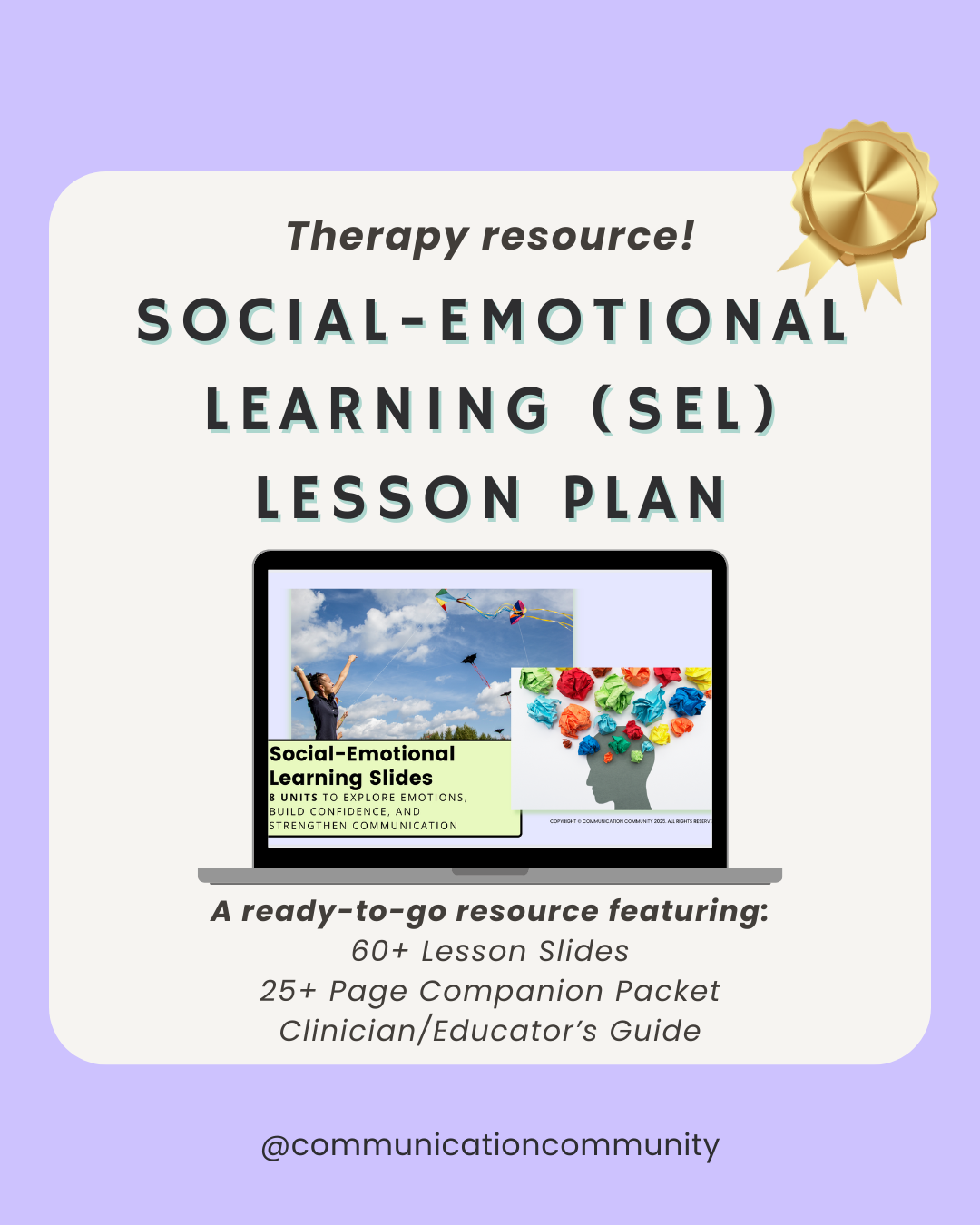Our comprehensive goal banks for school-aged language, AAC, Early Intervention & preschool, and fluency are available on our site or Teachers Pay Teachers store!
Save time creating goals with over THOUSANDS of possible goal combinations. Select your own combination of DO + CONDITION + CRITERION (and consistency) statements to develop personalized and measurable goals for your caseload.

Voice Disorders Overview
As mentioned in our previous article about pediatric voice disorders, a child has a disorder when their vocal pitch, quality, and/or amplitude are not as expected for their age.
Pitch refers to the frequency, or how high or low, a voice sounds. Quality is how the voice can be perceived; e.g. is it “normal,” rough, breathy, etc. Amplitude, sometimes referred to as loudness, is the average loudness level of one’s voice.
A child can have a voice disorder that is organic or functional in nature. An organic etiology may be caused by a structural abnormality affecting the vocal mechanism, whereas a functional etiology be caused by excessive vocal strain, such as yelling too much.
Most pediatric voice disorders can be treated by trained speech-language pathologists (SLPs). Having a well-thought-out treatment plan is important for treating all speech and language disorders, and this starts with having good goals.
Writing Voice Disorders Goals
If you haven’t already, check out our article that outlines How to Write Speech Therapy Goals. This post provides an in-depth template of our Communication Community goal writing formula (with examples)! For the purpose of this article, we will focus specifically on writing goals for pediatric voice disorders.
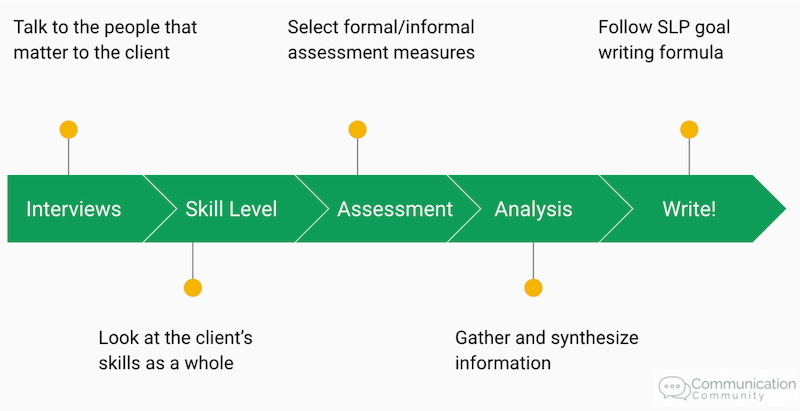
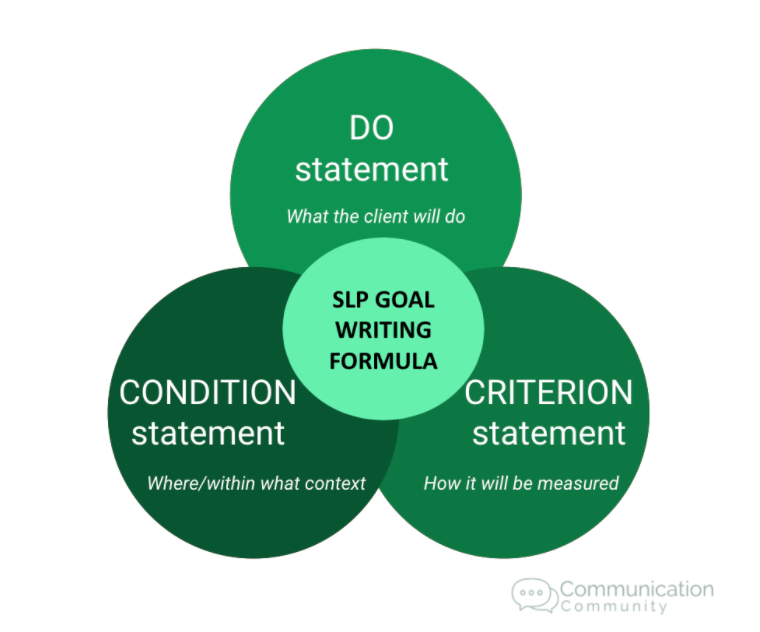
As seen above, speech goals should be written with 3* components in mind: the DO statement, the CONDITION statement, and the CRITERION statement.
*Also commonly included is a consistency statement. Aka: does the individual have to meet a specific criterion more than once? A common example of this may include across 3 consecutive sessions. This is usually something understood by the therapy organization/service provider and is sometimes included in the written goal itself. This is to ensure that the skill has been generalized and provides more reliable data that the skill has been properly mastered.
DO statement
What the client is actually going to DO and the specific skill they will be working towards.
Example: identify 3 healthy vocal hygiene practices
CONDITION statement
The specific setting and/or context your client will work on this skill.
Example: during structured therapy tasks
CRITERION statement
How the client’s performance will be measured.
Example: with 90% accuracy
DO + CONDITION + CRITERION
Example: [Client] will identify 3 healthy vocal hygiene practices, during structured therapy sessions, with 90% accuracy.
There you have it: an example of a pediatric voice goal using our Goal Writing Formula containing the DO + CONDITION + CRITERION statements. You may also include a CONSISTENCY statement (as seen below in some examples).
Voice Goal Bank
The following are some goals that could be used for children with voice disorders. We want to note that this goal bank is not all-encompassing and ALL speech and language goals should be created based on results from a comprehensive assessment and with input from children/caregivers as well.
Treatment for pediatric voice disorders involves both direct and indirect treatment. Direct treatment refers to manipulating the vocal mechanism in order to improve pitch, quality, and/or amplitude. Indirect treatment refers to education and counseling related to voice disorders.
Direct Treatment Goals:
-Example #1: [Client] will use the Cup Bubble (Lax Vox) to improve their ability to sustain phonation for 10-seconds, during structured therapy tasks, in 4 out of 5 trials.
-Example #2: [Client] will identify and use 2 laryngeal relaxation strategies, in small group settings, with 90% accuracy across 2 sessions.
-Example #3: [Client] will identify the optimal loudness level in various scenarios (e.g., quiet, normal, loud), during structured activities, with 80% accuracy.
-Example #4: [Client] will speak at an optimal loudness level, in a classroom setting, in 8/10 trials, across 3 out of 4 sessions.
-Example #5: [Client] will use the stretch and flow program to improve voice quality, during structured activities, with 80% accuracy across 3 sessions.
Indirect Treatment Goals:
-Example #1: [Client] will identify 3 healthy vocal hygiene practices, during structured therapy sessions, with 90% accuracy.
-Example #2: [Client] will report (verbally or in writing) on the use of healthy vocal hygiene practices outside of treatment sessions, to speech-language pathologist, in 8 out of 10 opportunities.
-Example #3: [Client] will name 4 parts of the vocal mechanism and their purpose, to a familiar communication partner, in 4 out of 5 opportunities.
-Example #4: [Client] will participate in a home-based vocal hygiene program, given instructions to caregivers by SLP, in 80% of opportunities.
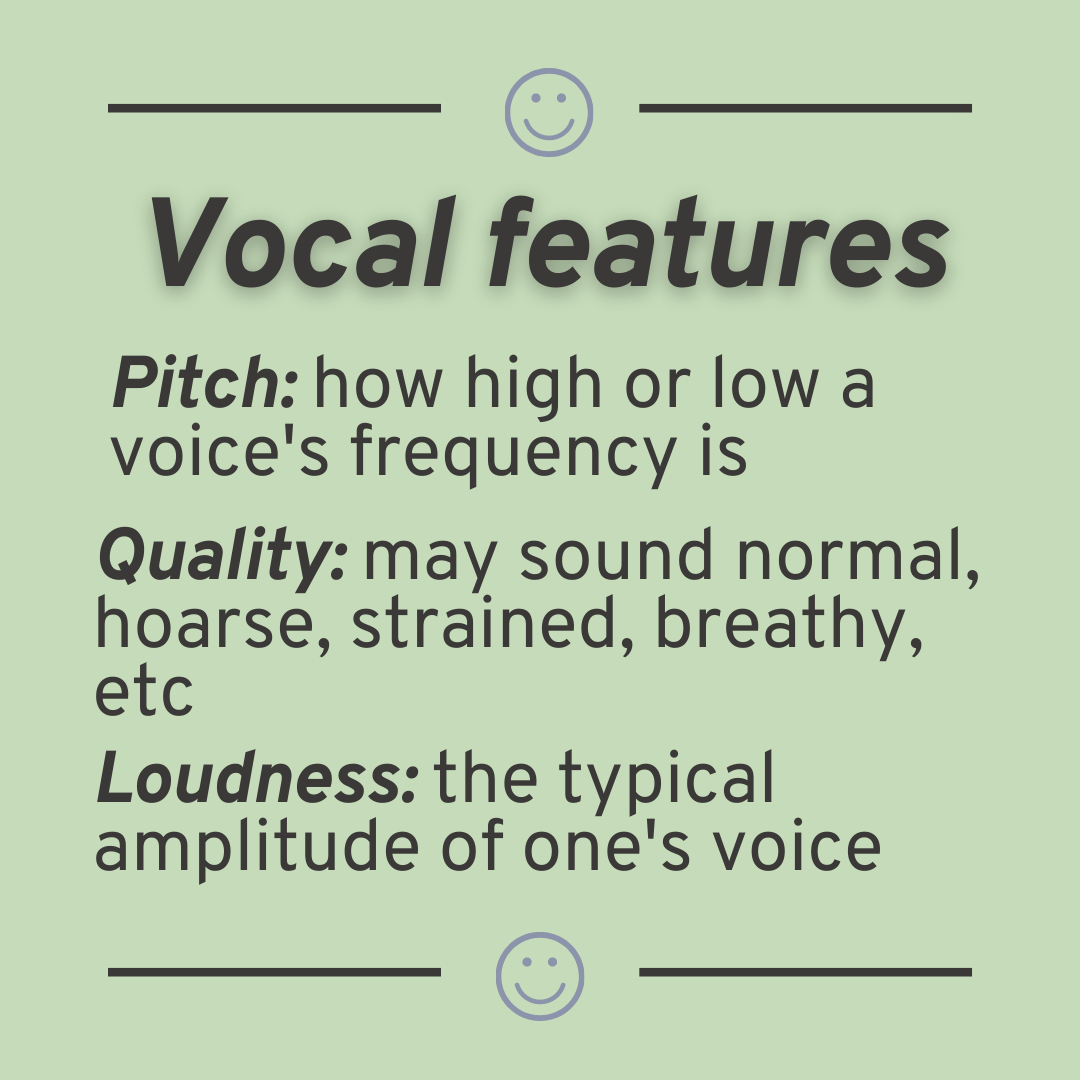
We hope that you find these goals helpful. For more goals posts, check out our collection of other speech and language goals:
- How to Write Pragmatic Language Goals
- How to Write Receptive Language Goals
- How to Write AAC Goals
- How to Write Articulation Goals
- How to Write Expressive Language Goals
- How to Write Play Skills Goals
- How to Write Fluency Goals (Stuttering)
- How to Write Cluttering Goals
- How to Write Phonological Awareness Goals
Want to know how we prep ourselves for goal-writing (and more)?
These are some of our favorite resources for working:
- Clipboard with storage- we use ours ALL THE TIME!
- Some really nice pens - the feel of a pen that writes so well...priceless.
- Blue light glasses- for when excessive screen time is just...necessary
Happy writing!
This post contains some affiliate links and we may be (slightly) compensated if you use them, but all opinions are our own. We appreciate the support!
Citations/further research:
https://pubs.asha.org/doi/10.1044/0161-1461%282004/032%29
http://www.atempovoicecenter.com/all-products/stretch-and-flow-voice-bundle-for-voice-therapy
https://pubs.asha.org/doi/10.1044/2020_AJSLP-20-00304
https://www.asha.org/practice-portal/clinical-topics/voice-disorders/#collapse_6

